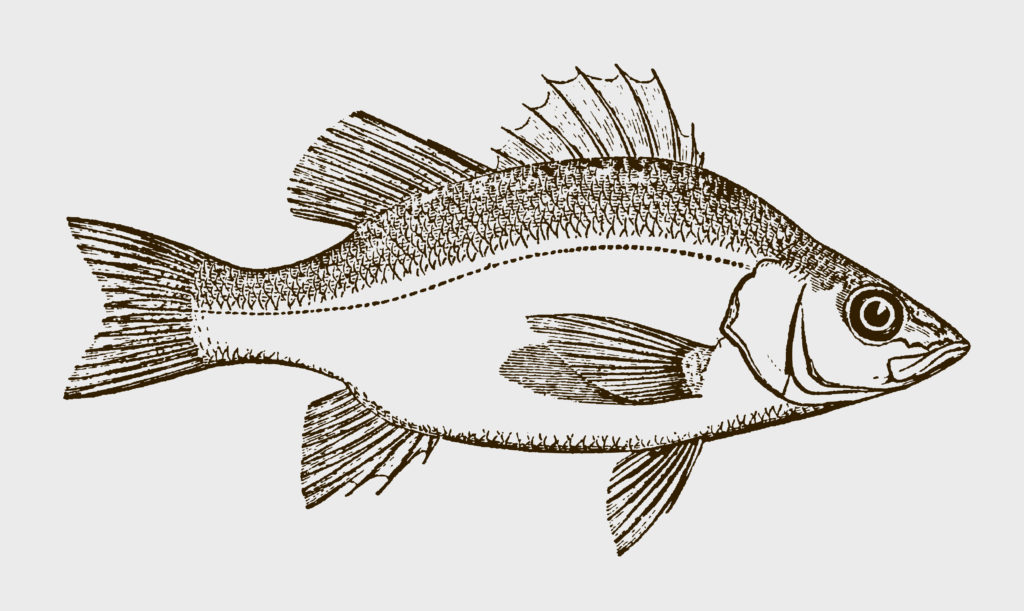Sporting Life

Singing the Praises of White Perch
By Dennis Doyle
The Chesapeake is an incredibly fertile estuary that rewards virtually everyone who ventures upon it. And it has some very famous wild creatures: the Bay oysters that fed virtually the entire surrounding nation for the past century, the springtime shad and herrings that did the same and even saved George Washington and his fledgling army from starvation at Valley Forge, the blue crabs that have continually caressed the palates of all of the citizens who learned to eat them and the striped bass which have conquered the hearts of most all Northeastern anglers that have pursued them for over 250 years.
There is one wild swimmer, however, that is mostly unsung all these many decades and perhaps that has been a good thing.
The white perch has survived in goodly numbers and without too much notice, since humans first populated the Chesapeake region. It also happens to have incredibly superior eating qualities and the ability to thrive throughout the Bay and all of its tributaries despite continual harvest.
With the proper equipment (and by proper, I mean balanced to the white perch’s size and proclivities), they are sport beyond excellent. Six-pound line is a perfect match though many aficionados claim four-pound or even two is a superior choice. And they might be right, except for the perch’s tendencies to loiter around rocks, downed trees, old docks and any structure that provides a haven from predation.
The lures that the perch loves to attack are not expensive but they are not free either and if you haven’t lost a handful in a day of earnest fishing, you’re not casting in the right places. Six-pound line just might fetch your lure free from a hangup but four- and two-pound will definitely prove a disadvantage.
Small spinnerbaits and spoons are this delectable scrapper’s weak spot in waters of 6 feet and less and they will attack them with abandon. Down deeper, live bait such as worms, clams, shrimp, crab and minnows might prove more productive but they’ll also hit on small metal jigs in bright colors.
My preference is for light rods of 6 foot and less when fishing from my skiff though if you do a lot of long-distance casting or shore fishing a longer rod may be helpful. I use small, ultralight reels with smooth drags and a capacity for no more than 150 yards of 6-pound line. Throwing long distances from shore with up to two-ounce sinkers may require moving up to 10- to 15-pound tests but my preferences would tend toward finding a better spot where the fish are closer.
The white perch fishing season (actually open year-round) in reality starts right now. They are swarming for their springtime spawning run and will mass in tributary waters. They will run in surges up into the extreme headwaters (where it is illegal to take them) and then after spawning slowly migrate back closer to the Bay proper. Some will take up residence all along the tributary banks while others will head directly back to the Bay’s deeper waters.
There is no minimum size and possession numbers are unlimited, but anything under 9 inches has little meat to offer and it’s never a good idea to keep more than you’re going to eat in the next three days. On the table they are quite delectable, especially fried crispy with a Panko crumb coating and a cold adult beverage. It’s my first high quality meal on the Chesapeake every spring. Bon appétit!
Fishfinder:
The white perch run has now started and the fish are eager once again. The last few warm spells have started the spawning urge in earnest in more than a few rivers. It’s grass shrimp under a bobber for most areas but at low tide a bottom rig with the same bait will get fish holding in the deeper pools. Worms of all types will also work as will small minnows. Keep a small crank bait or spinnerbait handy for challenging pickerel when the perch bite is slow. Springtime beckons, the daffodils are blooming and things are finally right with the world.
